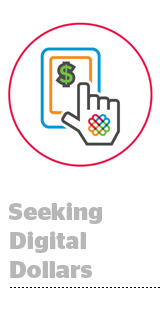
Meredith’s overall Q2 ad revenue grew like gangbusters, but digital ad revenue performance was draggy – and will likely be the same next quarter, the company told investors Monday.
Advertising-related revenue nearly doubled year over year to $488.9 million – a 111% increase – and digital represents more than $400 million of Meredith’s revenue for its national media group.
“[But] performance is basically flat from a digital advertising perspective on a comparable basis,” CEO Tom Harty told investors.
That’s where Time Inc. comes in. Meredith completed its $2.8 billion acquisition of Time Inc. just over one year ago, with plans to use the combined scale to expand digital margins and reduce costs overall as print continues to circle the drain.
“We’re always weighing short-term goals against our long-term strategy of investing in the business for sustained growth,” Harty said, pointing to Meredith’s plan to reduce its debt by $1 billion this year. “[And] our hypothesis hasn’t changed on where we believe print advertising is now.”
On the digital front, though, Meredith is making progress with a multipronged plan to integrate and maximize its new Time Inc. portfolio, Harty said.
At the top of the list was Meredith’s goal to raise the ad performance of its acquired properties to Meredith’s own historical levels by, among other tactics, “aggressively” marketing the portfolio to open up new ad and marketing budgets. Meredith embarked on this course last year even though most clients had already allocated their 2018 ad budgets.
The tenacity paid off, Harty said, and “earned our brands several agency-preferred partnerships and access to calendar 2019 advertising campaigns.”
After growing the profit margins for Time Inc.’s digital properties to be commensurate with its own, “we are well positioned to benefit from fast-growing advertising platforms,” he said, “including native, video, shopper marketing, programmatic and social.”
But advertising revenue – digital or otherwise – isn’t the only way to make money. Meredith plans to continue spinning off legacy Time Inc. titles to generate cash as part of its debt reduction scheme.
Time Magazine and Fortune both sold to billionaires for a combined $340 million in 2018, and Meredith anticipates sales of Sports Illustrated, Money and its 60% equity investment in Viant to all close this year.
This post was syndicated from Ad Exchanger.


More Stories
Scroll Media boosts in-game advertising with new feature
Kiwi filmmaker spotlights media struggles at top global awards
T-Mobile Has Appointed Kristin Harrer As Senior Vice President and Chief Brand Officer